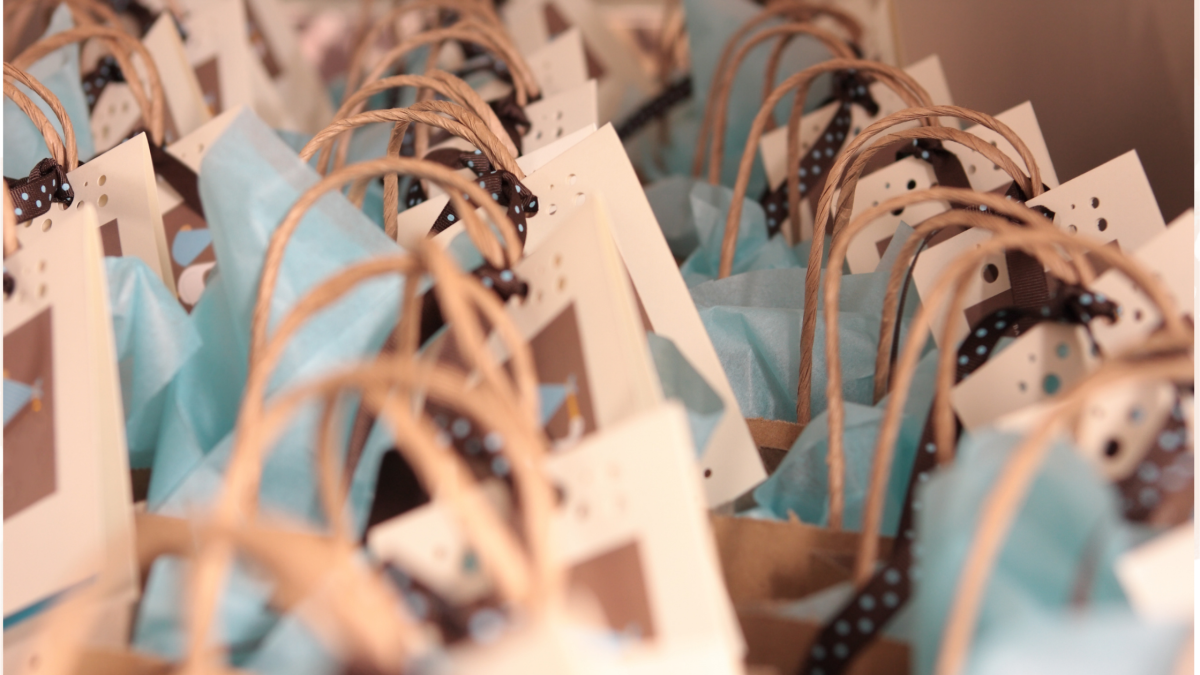We’re all a little giddy about the return to in-person events. Pickett & Associates is busy refreshing tradeshow-bound collateral, pop-up banners and branded “swag” … or maybe you call it “tchotchkes.” We’ve also got a few clients with events coming up that we’re helping organize and promote, and that, too, calls for branded materials.
Of course, we’re in “red carpet” season for the entertainment industry, and the coveted “goodie bags” for both participating and attending celebrities remain a standard. Despite bad behavior … this year’s Academy Award nominees received, according to NBC and E! News:
- A three-night stay in Scotland’s Turin Castle, worth $50,000, inspired by Denzel Washington being nominated for Best Actor in The Tragedy of Macbeth (butler service *is* included, thanks for checking).
- A four-night stay at the Golden Door resort in California, worth $15,000.
- A small plot of land in Scotland, along with the title Lord or Lady of Glencoe.
- A $12,000 liposuction procedure from Thomas Su, MD, called “Celebrity Arms.”
- $10,000 of “treatments and rejuvenation procedures” from Konstantin Vasyukevich, MD.
- A life coaching session with Kayote Joseph, worth $1,200.
- Popcorn.
- $25,000 in home renovations from Maison Construction in L.A.
I can’t make this stuff up. In the “gross” category, once upon a time UGG sent swag bags, including their furry boots, to the celebrity friends of Phillip Seymour Huffman, hoping they would wear them to his funeral in a cold and windy New York City. While associating your brand with a celebrity or influencer is a great way to engage your audience, today’s “influencer marketing” makes this a bit of a different (pricey and hard to navigate) venture.
Marketing Swag
Nonetheless, for years organizations have employed the “swag” tactic to get traditional media buzz.
I have always felt a tangible item representing an organization was a valuable marketing tactic. Then I learned something valuable from a travel editor of a national magazine. She shared her tales of “swag bags” … or what a public relations/marketing professional would think of as simply sending product samples. Except the largess of the samples was bordering ridiculous. Examples: A huge case of frozen bakery goods, multiple monogrammed items from various spas and resorts hoping for a visit and a good review, and the usual run of logo-ed coolers, mugs, and travel bags. “Really,” she said, “why on earth would I want four coasters and a spa robe emblazoned with your logo?”
So, what do they do with all those goodies? They all go into a closet, confided the editor. And at the holidays, the closet provides the office “white elephant party” with a wide variety of gifts. Yes, they draw numbers and get to pick stuff – aka some poor marketing person’s well-meaning product samples— out of the closet.
Strategic Swag
So, unless you really want to provide entertainment for an editorial staff or have your items go ignored (which is reportedly what happens to most of the goods in the aforementioned Academy Award swag), think strategically before you place an order for the latest, greatest promotional item or decide to send anything randomly to current customers, potential clients or the media.
What does that look like? Ask yourself these four questions before loading stuff into a box and calling the FedEx guy.
- What are you trying to accomplish? Are you saying “thank you?” People love a simple, handwritten note these days … no need to send them something they don’t want. Are you trying to attract a new client? If they have no connection to you, why would they want something with your logo? Do you desire media coverage? Sending along well-written information describing your product, service or organization, a link to your website and asking if they’d like samples of your product is perceived as a more reasonable approach.
- Did You Ask Permission? Most important when sending product samples to the media. A “food drop” to media outlets is a common practice around special events or restaurant openings. It can garner great chatter and mentions … but do call ahead to make delivery arrangements. Many reporters are not allowed to accept such freebies.
- Do you have a specific recipient in mind? When ordering promotional items, do you have a specific purpose or event? Are they for a trade show or health fair? In that case, promotional items are a good way to be remembered – as long as it’s not the same tired item that everyone else is giving away. Avoid the “marked down” items and go for the unique and innovative. And if you are sending a product sample, for heaven’s sake, send to an actual (and appropriate) recipient and not just a general delivery.
- Does it represent your brand? Does the promotional item or product sample represent the very best your company can offer? And how will this item transport? The only thing worse than sending someone an unsolicited product sample or promotional item is sending a broken or tainted product sample or promotional item.
In conclusion, product samples and promotional items can be an awesome way to build brand awareness and create a buzz about your company. But it can also be a huge waste of time and effort. Until you have a clear strategy as outlined above, keep your swag in the bag!





